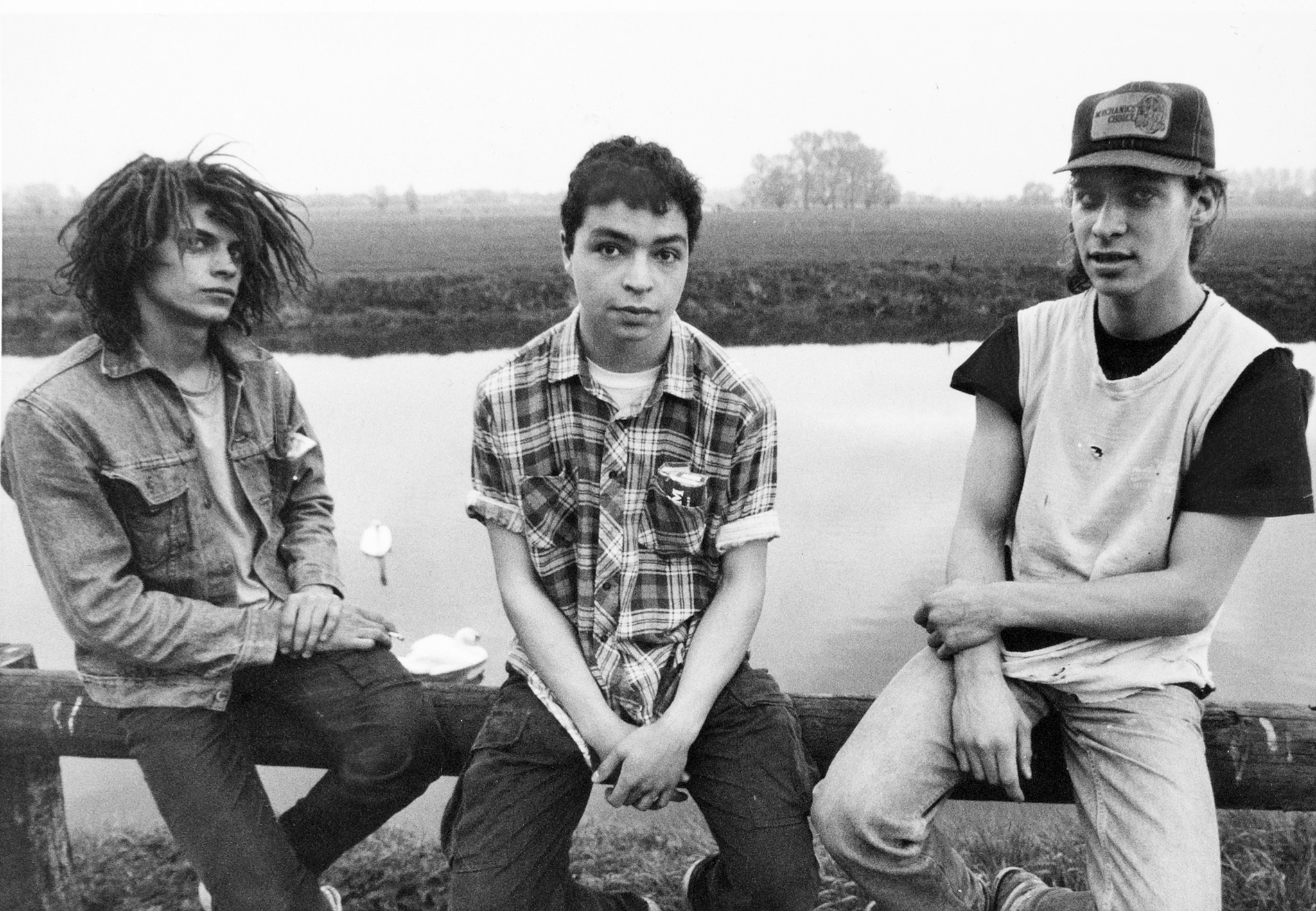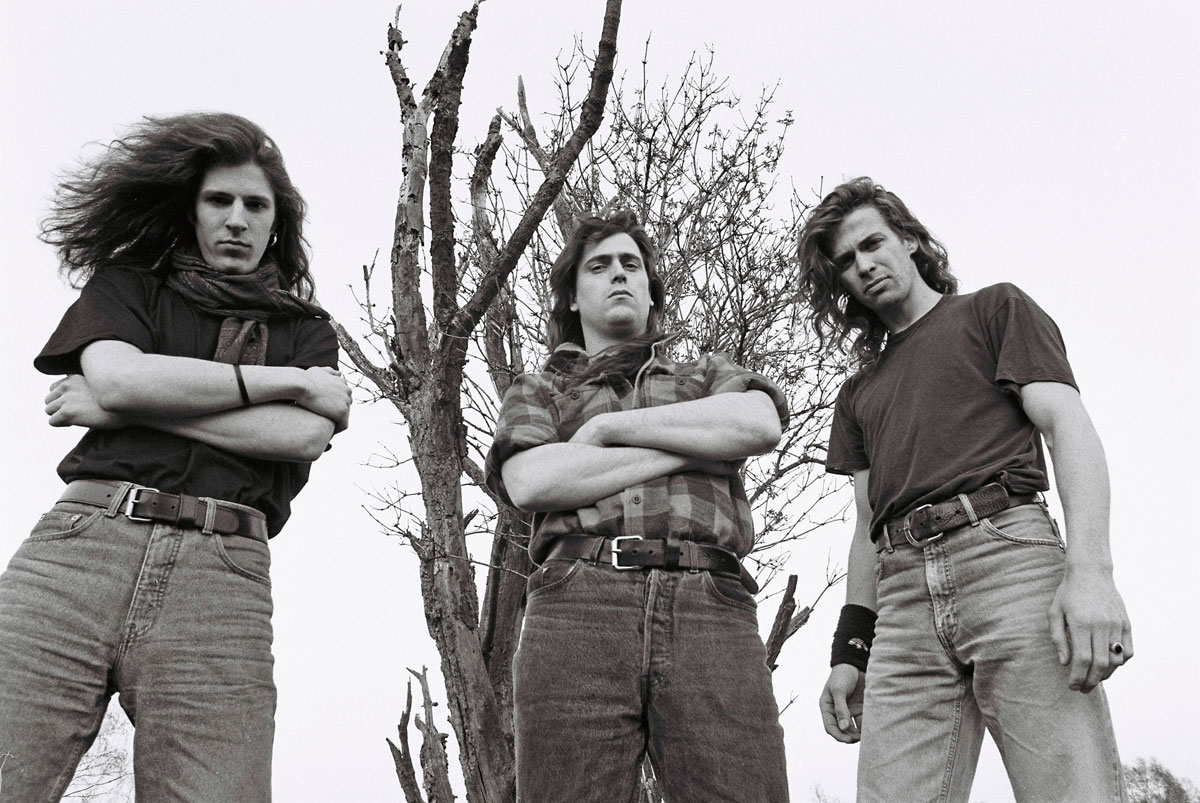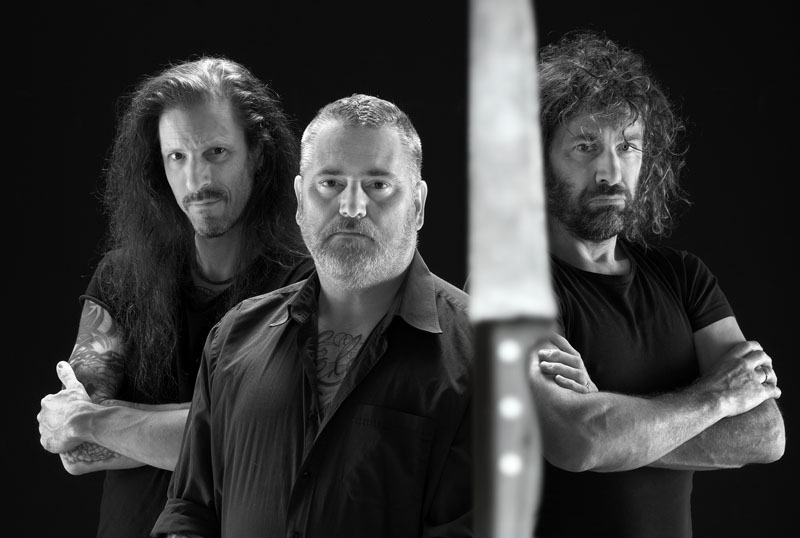History
Autumn 1985, Venlo, a small Southern Dutch town on the German border. Pieter de Swart, Martin van Cleef, and Danny Lommen – who played in two popular, local punk bands, Disgust and Pandemonium – began jamming and stumbled upon a nihilistic and droning sound that perfectly suited the regional slang word ‘goor,’ meaning ‘filth.’ Thus, the term mutated and the budding instrumental outfit became known as ‘Gore.’ Their approach was somewhat remarkable: Instrumentalists were usually techies and not very common in the punk scene, although the idea wasn’t preconceived, it was out of convenience, as finding the right voice would have unnecessarily complicated the matter. Because strictly speaking, Gore was all about the jam, the endless riff. Still, after Van Cleef was sacked for his lack of commitment, Gore would have died a quick and quiet death were it not for Rob Frey (aka Marij Hel). A few years older and constructively enthusiastic, he had offered to manage them but instead was challenged to take Van Cleef’s vacant position. Not just the bass player, Frey engaged his services by promising to bring his cohorts to the top of the freshly awakened alternative scene of the era. The quest debuted on New Year’s Eve ’85 and, within two years, it evolved into a string of 200-plus shows all over Europe. Initially, Gore supported acts like Bad Brains, Sonic Youth, Big Black or the Butthole Surfers and later, the trio headlined tours with the likes of Italian hardcore rockers Negazione as well as with ‘Rollins Band’, the successor group to Black Flag.
In late 1987, a burnt-out De Swart quit the group. Meanwhile, three albums were released: ‘Hart Gore,’ ‘Mean Man’s Dream,’ and ‘Live.’ The records drew their fair share of attention and convinced Megadisc – a Dutch record label with a large international catalog – to invest serious money in the band. Megadisc believed strongly in its latest prospect and hooked them up with Steve Albini, then about to cement his credit as a producer with ‘Surfer Rosa,’ the highly acclaimed breakthrough album by the Pixies. During the summer of 1988, Albini spent a month working with Gore’s new four-piece lineup, including guitarists Joes Benli and Frank Stroobants, at the Dureco Studio, just outside of Amsterdam. The result was the monumental ‘Wrede’/’The Cruel Peace,’ a 70-minute double album consisting of only four songs, which continued the band’s international rise. Within half a year of De Swart’s departure, Gore had retaken the stage and, for the first time, played dates on the East Coast of the US. ‘Wrede’s’ epic quality was a break from the band’s original concept. It was a deepening of sound and structure but still a logical continuation of their fundamental, one-dimensional origins. But as a concept, it couldn’t be stretched further, and unfortunately that also applied Frey’s relation with Lommen; in the months after finishing ‘Wrede,’ Gore slowly fell apart. Determined to score his masterpiece, Frey transformed into a ruthless jerk around anyone who got in his way. Simple as that. Specifically, Danny- with whom he had resurrected Gore after De Swart left them to die – got fed up with his tyranny and sought to continue on his own terms, understandable but unworkable. After Megadisc released ‘Wrede’ in the fall of 1988, Gore embarked on a four-month European tour. The situation became grimmer and more grotesque with each new day, and four weeks into the trek, the band finally popped. But that wasn’t the end of it: Lommen didn’t take his loss for granted and went to court, accusing his former partner of malpractice. It took the court four years to rule his case inadmissible.
And it took Frey exactly these four years to put together a new line-up and record ‘Lifelong Deadline’, Gore’s 5th album release. For starters it took two years to find the right musicians. Although ‘Wrede’ had been worth the trouble, Frey was determined not to repeat the same mistakes twice. At long last, drummer Bardo Koolen and guitarist Johan van Reede rounded out the third and final incarnation of Gore. Unfortunately, in the meantime, Megadisc had ceased operations and Gore had to find a new home for its work. Frey searched everywhere, scouring the US from coast to coast without any luck. The only real interest came from Bill Laswell, but regrettably, Frey rejected his proposal to cut the album in two weeks’ time. Eventually, the German label SPV invested heavily in Gore by putting them in an Amsterdam studio for eight weeks and releasing the resulting ‘Lifelong Deadline’ in late 1992. But even if Frey had formed with Koolen and Van Reede Gore’s most competitive line-up, it was too late to hook back into the hype ignited by ‘Wrede,’ which had, by then, blown over entirely and although supported by nonstop touring, ‘Lifelong Deadline’ was a commercial disaster, even more so because the outspoken band was quick to avow its complete artistic failure. What needed to be Gore’s magnum opus turned out to be an overproduced monstrosity. The only consolation (and hint of the album’s potential) was that the band toured ‘Lifelong Deadline’ for more than three years, tearing apart each and every stage on which they performed. The band then tried to make up for the miscarriage by releasing new material but lacked ample confidence, and the next album didn’t materialize promptly enough. Four years again passed before Gore saw themselves forced to issue ‘Mest/694’3′ as a fully independent release on their own MessBack Music label. But despite the again favourable press and head-turning performances, it was obvious that Gore had reached its expiration date. After a little more than 10 years, Gore came to an end with the release of ‘Slow-Death,’ its eighth and final album, in the spring of 1997.
In the 20+ years since, Gore has rejected approximately the same number of reunion requests. Reunions are usually meant to relive success stories but, with all the good will in the world, Gore doesn’t really fall into that category. The albums and performances were doubtlessly intense and groundbreaking, but it’s also true that the press tried to create more of a buzz than the audiences actually desired. For most people Gore was a bit to much, let’s face it. The only buzz that remained resonating was that of Johan van Reede, who wanted to re-record ‘Lifelong Deadline’ – a monk’s task that he eventually began executing in the summer of 2016 and slowly, the notion registered that they could rehabilitate ‘Lifelong Deadline.’ Initially, they considered reproducing the entire album, but this would’ve been a pointless challenge. The original release successfully captured an element of pandemonium and revising every moment of that sprawl didn’t make sense. Where ‘Lifelong Deadline’ really fell short was in its lack of conviction as a comprehensive production. So, after Van Reede thoroughly restored 10 of the originally 20 songs, they decided that in order to deliver a truly competitive album, they needed a heavy-weight to really top it off, Terry Date being there unanimous choice. And after Date finished the mix in August 2018, as a complement to the results, Gore decided to let Howie Weinberg, who had cut so many of Date’s golden discs, master the album. In the meantime, word got out that Gore had been planning a re-release of ‘Lifelong Deadline’ and for the first time in almost 30 years, it seemed like some frequencies were starting to vibrate at the same time again; having silently kept the fire burning for years, several die-hard Gore fans were now displaying remarkable grassroots interest and opening the doors to a, finally very real Gore reunion.
The reunion finally took place late March 2019 at Ateliers Claus in Bruxelles, Belgium, 20+ years after the curtain first fell in 1997. But although ‘Revanche’ was a killer album, it was soon clear that the industry once again as before, without Gore ever having expressed anything else than a complete understanding for it, did not dare to venture into the band, despite all the bs-respect-stories from all those hip labels. Fortunately, there was one small German label, Exile On Mainstream, who stood for their respect and gave ‘Revanche’ the release that it proved to be worthy of, even if that was only because of a journalist who reviewed the album with ‘I have no clue why this album annoys me as it does, all I know is I haven’t played anything else but this for weeks!’ However, a reunion is not a comeback, and it was crystal clear that without the support of the big boys a comeback wouldn’t come to fruition. So, with a few festivals, a handful of opening and some headlining shows it were 12 shows all together with the for now finale being a truly home-town-run in Grenswerk, Venlo, Holland on March 9, 2020. The day after, March 10 the world came to a halt.





